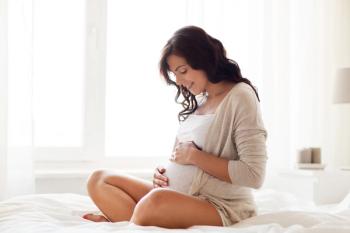
Texas abortion law linked to spike in mental distress
A new study finds that Texas' restrictive abortion law significantly increased rates of mental distress among reproductive-aged women, especially those aged 18 to 29 years.
Mental distress among reproductive-aged women has increased by Texas’ abortion restrictions, according to a recent study published in JAMA Network Open.
Overview of the Texas Heartbeat Act
The Texas Heartbeat Act Senate Bill 8 (SB8) banned abortion after the detection of embryo cardiac activity, which can begin as early as 5 to 7 weeks from the start of the previous menstrual cycle.2 As this bill was implemented earlier than those in other states, Texas provides the most data about associated health outcomes.1
“One limitation of pooled, multi-state data is that it is very difficult to fully account for state-specific confounders that may track abortion restrictions, such as poverty policy or access to mental health services,” wrote investigators.
Evaluating mental distress trends
The repeated cross-sectional study was conducted to evaluate how mental distress shifted from the SB8. Data including health and demographic information was obtained from the Behavioral Risk Factor Surveillance System.
Participants included non-institutionalized adults aged 18 to 44 years reporting their mental health experiences in the past 30 days. Frequent mental distress was measured in these patients as the primary outcome, defined as at least 14 days of poor mental health.
Outcome data was obtained through self-reported responses to the question, “Now thinking about your mental health, which includes stress, depression, and problems with emotions, for how many days during the past 30 days was your mental health not good?”
Analysis and comparison groups
Changes were evaluated through a 2-way fixed-effects difference-in-differences design. As Texas SB8 was implemented September 1, 2021, the pre-exposure period was defined as January 2012 to August 2021, while the post-exposure period was September 2021 to December 2022.
States with trigger laws and similar COVID-19 policies were used as an additional comparison group, alongside California. Covariates included race and ethnicity, age, education, marital status, employment, check-up within 1 year, health status, body mass index, and a year-fixed effect.
Increase in mental distress
There were 79,609 patients included in the final analysis, 43.9% of whom were aged 18 to 29 years, 38.3% 30 to 39 years, and 17.8% 40 to 44 years. Of these patients, 25.5% were women in Texas, with a frequent mental distress rate of 14.2% at baseline and 21.9% after SB8, representing a 7.7% increase.
In comparison, the increase among male patients was 3.9% between periods 1 and 2. Trends at baseline did not significantly differ between female and male patients but disproportionately rose among female patients after SB8. These differences were more pronounced among younger patients vs older patients.
Comparisons to other states
Similar increases in mental distress were linked to SB8 when comparing female patients in Texas to those in other states. An increase in frequent mental distress of 5.3% was reported for Texas compared to a pooled sample from 5 other states, vs 6.1% when compared to female patients from California. When stratifying by age, these increases were 7.3% and 13.8%, respectively.
These results indicated a significant increase in frequent mental distress among female patients because of SB8. This outcome was significantly more pronounced among patients aged 18 to 29 years.
“These findings suggest that restricting access to abortion may be associated with poorer mental health, particularly among young people,” wrote investigators.
Reference
- Lee J, White K, Dalton VK. Mental distress among females following 2021 abortion restrictions in Texas. JAMA Netw Open. 2025;8(5):e259576. doi:10.1001/jamanetworkopen.2025.9576
- The Heartbeat Act, S 8, 2021-2022, 87th Leg (TX 2021). Accessed May 22, 2025. https://legiscan.com/TX/bill/SB8/2021.
Newsletter
Get the latest clinical updates, case studies, and expert commentary in obstetric and gynecologic care. Sign up now to stay informed.











